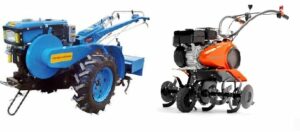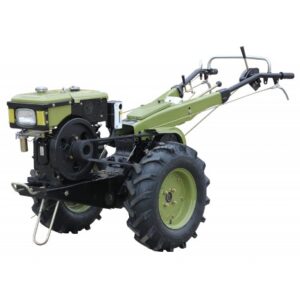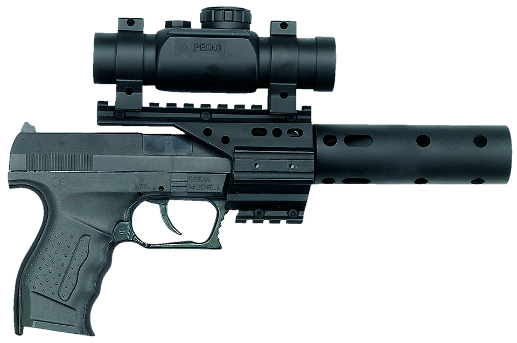What is the difference between a walk-behind tractor and a cultivator? We conduct a test drive

Even consultants in specialized stores cannot give an exact answer about the difference between a walk-behind tractor and a cultivator. Often, they are even placed in the same place. But this is far from true, because the difference can be colossal.
In our article we will try to explain as much as possible how a walk-behind tractor differs from a cultivator and in what situations one or another type of agricultural equipment is needed.
The content of the article
- Design of walk-behind tractor and cultivator: which is better in the line
- We compare the performance characteristics of the cultivator and walk-behind tractor and determine the difference
- What is the difference between the power of a walk-behind tractor and a cultivator?
- Cultivator or walk-behind tractor on the processing area: what to choose
- How wide and deep do the walk-behind tractor and cultivator go into the ground?
- What is the difference in travel speed between a walk-behind tractor and a walk-behind cultivator?
- What is the difference between a cultivator and a walk-behind tractor? Is it possible to install additional attachments?
- Walk-behind tractor or cultivator, which is better for managing the site?
- How to choose a cultivator or walk-behind tractor in the price category
- conclusions
Design of walk-behind tractor and cultivator: which is better in the line
If we talk about the design, then a walk-behind tractor or a cultivator is no different. The only thing is that the first one is much larger in size. That's all. Although, even some models of cultivators give light to walk-behind tractors. What is the difference between a walk-behind tractor and a cultivator - you won’t immediately understand. Let's take a closer look.
There are several differences between a walk-behind tractor and a cultivator settings:
- The cultivator works only on the upper layers of the earth. The movement of the nozzle is forward. If you install attachments, it can dig beds, turn up the soil and do other tasks in the garden.
- A walk-behind tractor is a piece of equipment that can move itself. For this purpose, it has a mount under the chassis (wheels). In fact, this is a real vehicle for transporting materials and cleaning the garden. Depending on the installed equipment, it can clear the snow and remove leaves from the garden. It works not only in the field.
As you can see, the difference between a walk-behind tractor and a walk-behind cultivator is that the first is a more complex mechanism in terms of performing tasks. To be precise, this is almost a small tractor. What they installed is what they work on.
Yes, it can be smaller in size and weight than a cultivator. But you can still hang a trailer and drive on it. And calmly drive around the expanses of the garden or even along the highway.
Another feature is that some models can reverse. And if there is also a locking of the chassis, then turn around in one place. Marvelous!
The motor in walk-behind tractors is internal combustion. The design simply does not provide for other options (in cultivators you can find models with an electric motor).
The most powerful representatives of the line are with a diesel engine. Simpler options have four-stroke engines.
An addition to expensive models is a power take-off shaft. What is its essence: you can significantly increase the threshold of components by adding a few more accessories.
We compare the performance characteristics of the cultivator and walk-behind tractor and determine the difference
Let's look at several characteristics that significantly affect the performance of both systems.
What is the difference between the power of a walk-behind tractor and a cultivator?
Speed and productivity are the winning position of a walk-behind tractor, because its characteristics are much higher than that of a cultivator system. But using it only on large sites is an oversight.
The thing is that there are devices of different power. The average mark for cultivators is from 1 to 6 horsepower. Powerful models of walk-behind tractors - up to 13-15 horses. Electric analogues of cultivators produce no more than 3 kW.
Thus, the cultivator has nothing to compete with large walk-behind tractors. Also, if the soil is not loose, but overdried, then only a professional walk-behind tractor can handle it. This will be a big load for the cultivation system. It may not be possible without a breakdown.
Cultivator or walk-behind tractor on the processing area: what to choose
Here the indicators are also different: if cultivators work without problems in gardens up to 20-30 acres, then walk-behind tractor systems “plow” without problems on both 30 and 50 acres.
Simply put, when choosing a walk-behind tractor or a walk-behind cultivator, pay attention to the area to be cultivated: the first is suitable for a small farm, and the second for a suburban area, garden or cottage.
How wide and deep do the walk-behind tractor and cultivator go into the ground?
For the latter, the width depends on the power of the model. The average size is from 15 cm to a meter. With a walk-behind tractor, the capture of territory can reach 100-130 cm.
The plowing width, depending on the model, is adjustable on both device versions. As we said earlier, cultivators lose when it comes to digging depth. It turns out that the walk-behind tractor won here too.

What is the difference in travel speed between a walk-behind tractor and a walk-behind cultivator?
A walk-behind tractor is a piece of equipment that can attach a chassis to itself and move on wheels. Therefore, the speed of its movement will be slightly higher than the cultivator.It is used both as a means of processing the site and as transport. Transporting goods is not a problem at all.
The gear adjustment range of the walk-behind tractor is also higher - you can adjust the movement to 6 gears.
The cultivator moves only with loosening the earth and a milling cutter - its speed depends only on soil moisture and does not reach the speed of a walk-behind tractor.
What is the difference between a cultivator and a walk-behind tractor? Is it possible to install additional attachments?
Now we will talk about accessories that can be useful to us both on the field and in everyday life.
Not every cultivation machine can work with attachments. Low-power devices can, perhaps, hill up the ground. That's all. The remaining segments are to perform work in only one area. They do what they put in place: they hill up, weed, plow, etc. If you plow the beds, then you cannot do without a chain on the harrow - otherwise you will get stuck in the bed and it will be impossible to pull out the device yourself.
But what is the difference between a universal walk-behind tractor. With the ability to attach additional parts, it can do anything. Whatever task you give him: hang the attachment and move it for fun. Here's just a taste of what the device is capable of in action:
- Clearing snow debris;
- Sowing grain crops
- Watering the beds;
- Cleaning the garden, yard, street from leaves and dust;
- Mowing of thickets;
- Lawn aerator;
- Transportation of goods.
At the same time, the maximum weight of the load can be 2 or even 3 times greater than the weight of the walk-behind tractor with trailer.
Walk-behind tractor or cultivator, which is better for managing the site?
The only place where a mini tractor can lose is the need for physical effort and special skills. If you started the car the first time and drive it confidently, congratulations. You are Hercules!
Yes, the walk-behind tractor maneuvers and moves perfectly. You just need to learn how to turn it, move it back and control the nozzle.
The cultivator is easier to operate. Its size and weight even allow it to be transported in the trunk of your car.
But not everything with walk-behind tractors is so sad. Some additions will help improve equipment management:
- Electric ignition – allows you to turn on the vehicle at any time. And without effort.
- Differential locking is a process in which one chassis locks and the other rotates freely. Convenient for sharp turns and slipping.
Whether you apply these tips or not is up to you. Our goal is to provide useful recommendations.
How to choose a cultivator or walk-behind tractor in the price category
Since the design of the hiller is simpler, its cost is lower than that of a walk-behind tractor. The motor in the first system is also simpler, which affects the price tag in the store. And it can be 2-3 times cheaper than a mini tractor.
For example: a heavy-duty cultivator with a 6-horsepower engine will cost, on average, about $300, while a walk-behind tractor with similar engines costs half a thousand.
Electric options are even cheaper - no more than 100-150 dollars. For a gasoline engine you will have to pay an extra 100 bucks.
Which type of equipment and engine is best for you - decide based on your budget and the need for device performance.
conclusions
Let's summarize, what is better: a walk-behind tractor or a walk-behind cultivator? There is no clear and obvious answer on the surface and there never will be. You need to look at the specific situation and choose according to your needs.
For example, an electric cultivator is perfect for a small vegetable garden or garden. It takes up little space and saves energy.
For a garden of more than 6 acres, you can use a medium-power cultivator.There is only a gasoline engine here.
For complex purposes - cleaning the territory, working in garden beds, transporting goods - only a walk-behind tractor is suitable. It is versatile, but large and heavy. And it's not economical on gasoline.
What do you recommend: a cultivator or a walk-behind tractor? What are the differences between the technology for you and which option do you use yourself? Write to us in the comments!





